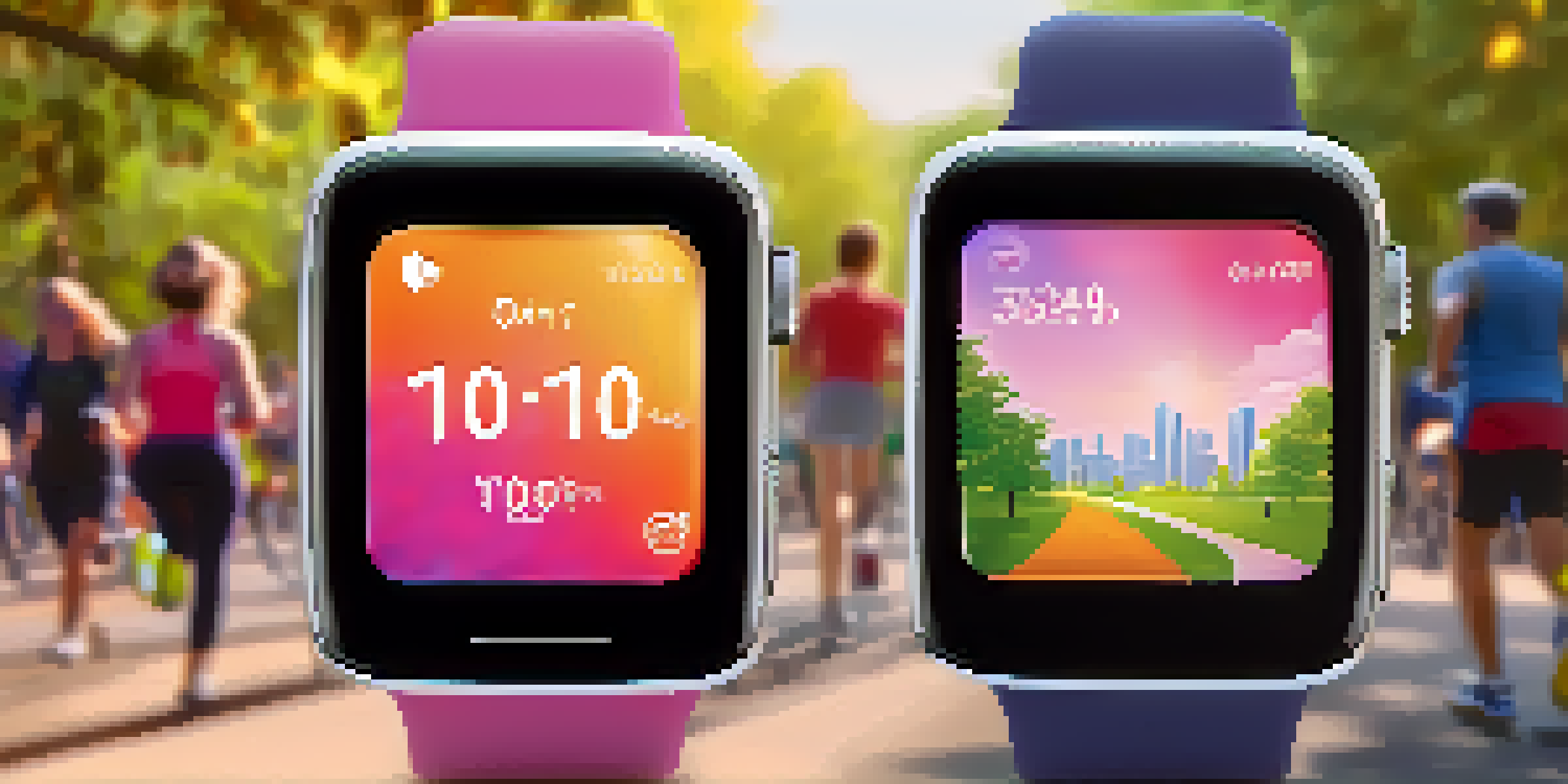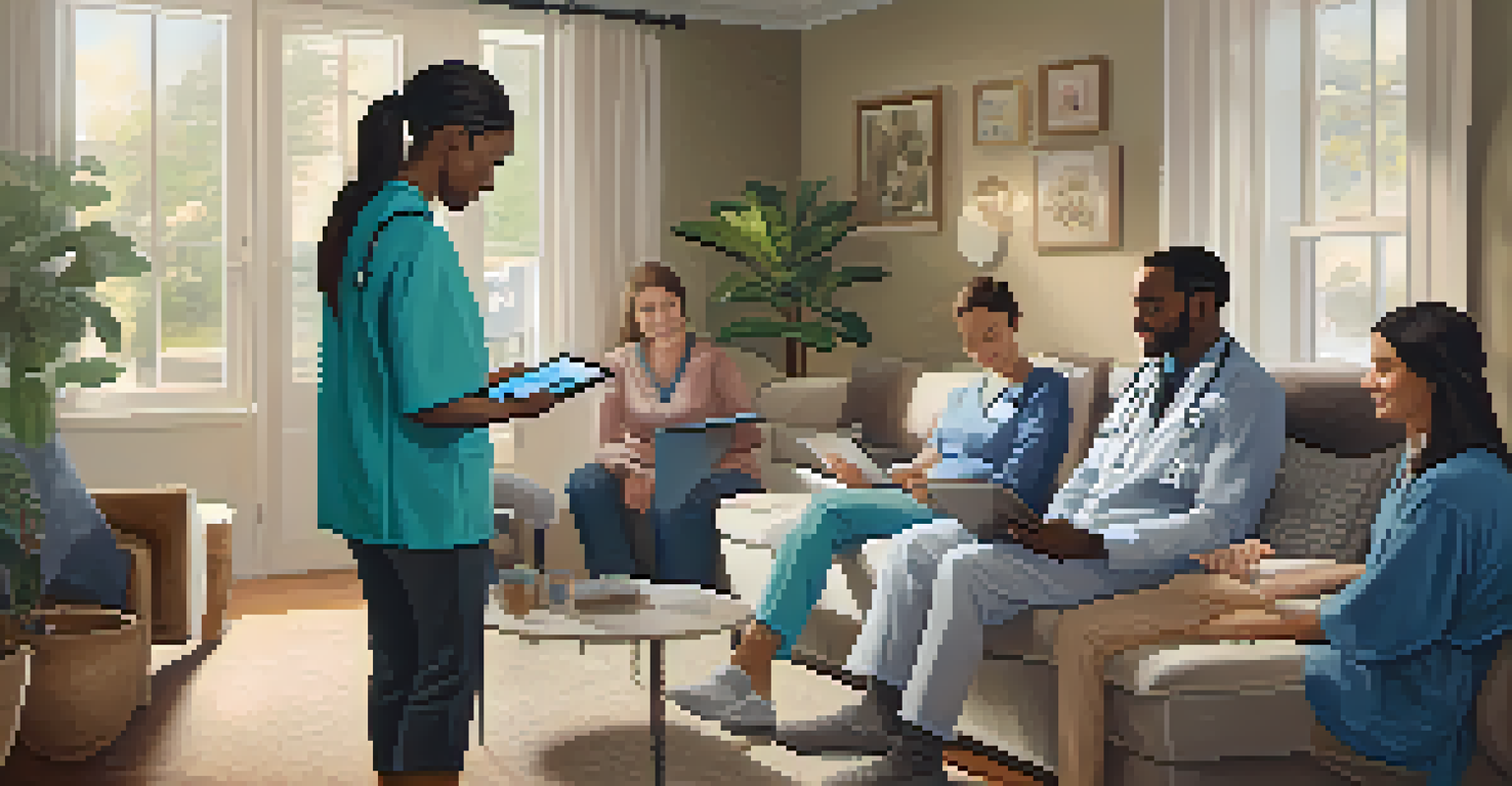The Role of Technology in Enhancing Chicago's Public Health

Innovative Health Monitoring Through Wearable Devices
Wearable technology, such as smartwatches and fitness trackers, is becoming a staple in health monitoring. These devices allow individuals to track their heart rate, activity levels, and even sleep patterns, providing valuable data for both users and healthcare providers. In Chicago, public health initiatives are leveraging this technology to promote healthier lifestyles and gather data on community health trends.
The greatest wealth is health.
By encouraging residents to utilize wearable devices, Chicago's public health officials can better understand the health behaviors of different demographics. This data can be instrumental in identifying areas that need more resources or targeted health campaigns. For instance, if a significant number of users in a particular neighborhood report low activity levels, authorities can design programs to encourage exercise and outdoor activities.
Moreover, the integration of wearable technology into public health strategies cultivates a culture of health awareness. When individuals are aware of their health metrics, they are more likely to take proactive steps towards improvement, leading to a healthier city overall.
Telemedicine: Breaking Barriers to Access
Telemedicine has revolutionized the way healthcare is delivered, especially in urban areas like Chicago. By allowing patients to consult with healthcare providers from the comfort of their homes, telemedicine eliminates many barriers to access, such as transportation issues and long wait times. This accessibility is crucial for marginalized communities that may face additional healthcare challenges.

In Chicago, initiatives promoting telehealth services have seen a significant uptick in usage, especially during the pandemic. Patients who previously struggled to access healthcare are now able to receive timely advice and treatment through virtual consultations. This has not only improved individual health outcomes but has also eased the burden on local hospitals and clinics.
Wearables Boost Health Monitoring
Wearable devices enable individuals to track vital health metrics, aiding public health officials in understanding community health trends.
Furthermore, telemedicine facilitates continuous care for chronic conditions, allowing patients to monitor their health closely with their providers. This ongoing relationship can lead to better management of diseases like diabetes or hypertension, ultimately enhancing the overall public health landscape in Chicago.
Data Analytics: Informing Public Health Decisions
The use of data analytics in public health is transforming the way cities like Chicago respond to health issues. By analyzing large sets of health data, officials can identify trends and hotspots for diseases, enabling them to allocate resources more effectively. This proactive approach allows for timely interventions that can save lives.
Technology is best when it brings people together.
For example, during flu season, data analytics can help public health officials track the spread of the virus and implement vaccination campaigns in affected areas. By understanding where outbreaks are likely to occur, Chicago can mobilize healthcare resources more efficiently, protecting its residents effectively.
Additionally, data analytics supports community engagement by providing insights into health behaviors and outcomes. When residents see that their health data is being used to drive positive change, they are more likely to participate in public health initiatives, fostering a collaborative approach to community health.
Mobile Health Applications: Promoting Personal Wellness
Mobile health applications are increasingly popular tools for promoting personal wellness in Chicago. These apps often offer features that help users track their diet, exercise, and mental health, empowering them to take charge of their health. By making health management accessible and engaging, these applications can lead to more informed lifestyle choices.
Incorporating gamification elements, such as challenges and rewards, these apps motivate users to stay committed to their health goals. For example, a user might complete a step challenge, earning points that can be redeemed for local health services or products. This not only enhances individual health but also stimulates local businesses that participate in the initiative.
Telemedicine Improves Access
Telemedicine provides crucial healthcare access, especially for marginalized communities, by allowing patients to consult providers remotely.
Moreover, mobile health applications often include community features, allowing users to connect with others who share similar health goals. This sense of community can provide encouragement and accountability, making the journey towards better health a shared experience.
Social Media: Raising Awareness and Engagement
Social media has become a vital platform for raising awareness about public health issues in Chicago. Public health departments utilize these platforms to disseminate vital information about health campaigns, vaccination drives, and wellness tips. The accessibility of social media allows for rapid information sharing that can reach a broad audience almost instantly.
Additionally, social media encourages community engagement by allowing residents to share their health journeys and support one another. Campaigns that go viral can lead to increased participation in public health initiatives, as people feel connected to a larger cause. For instance, a viral challenge promoting healthy eating can inspire many to adopt similar habits.
Moreover, social media provides an avenue for public health officials to gather feedback from the community. By listening to the concerns and experiences of residents, officials can tailor their programs to better meet the needs of Chicago's diverse populations, ultimately creating a more responsive public health system.
AI and Machine Learning: Enhancing Predictive Capabilities
Artificial Intelligence (AI) and machine learning are emerging as powerful tools in the realm of public health. In Chicago, these technologies are being employed to predict health trends and outcomes, helping to inform public health strategies. For instance, AI can analyze patterns in disease outbreaks, enabling officials to anticipate and mitigate future health crises.
By processing vast amounts of data, machine learning algorithms can identify risk factors and suggest interventions tailored to specific populations. This targeted approach allows for a more efficient allocation of resources, ensuring that help reaches those who need it most. For example, if data indicates a rise in asthma cases in a particular area, resources can be redirected to provide education and support to affected residents.
Data Analytics Drives Health Decisions
Data analytics helps public health officials identify disease trends and allocate resources effectively, enhancing overall community health responses.
Furthermore, the insights gained from AI analytics can guide public health messaging, making it more relevant and impactful. By understanding the community's needs, health officials can craft messages that resonate, ultimately leading to better health outcomes.
Community Engagement: Technology Bridging Gaps
Technology plays a crucial role in bridging gaps between public health officials and the community. In Chicago, initiatives that leverage technology encourage resident participation in health decisions. By utilizing online surveys and feedback platforms, health departments can gather insights from the community, ensuring that their programs align with resident needs.
Moreover, community forums held online make it easier for residents to voice their concerns and suggestions. This open line of communication fosters trust and collaboration between public health officials and the community, ultimately leading to more effective health initiatives. When residents feel heard, they are more likely to engage in health programs and advocate for their own wellbeing.

Additionally, technology facilitates educational outreach, making health information more accessible. Online workshops and webinars can address pressing health topics, empowering residents with knowledge that can lead to healthier choices. This two-way interaction enriches the public health landscape in Chicago, creating a community that is informed and engaged.